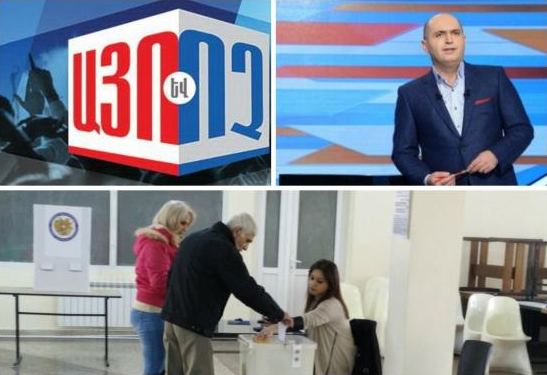
The electoral process doesn’t end with voting day. News sites and especially TV stations are expected to engage in intense work in the post-election period
Elections in Armenia are turbulent. According to the Caucasus Research Resource Centers’ Caucasus Barometer, 43% of respondents in Armenia (in 2013) considered the most recent national elections unfair.
The referendum on constitutional changes was no exception. The numerous cases of ballot stuffing, carousel voting, and pressure exerted on proxies and observers don’t promote increased public confidence in elections.
When there’s suspicion that the elections will be rigged, an important direction of journalists’ work on election day becomes obtaining and publishing information on electoral fraud.
The December 6 referendum from this perspective was not an exception. That’s why I’m beginning my list of observations on referendum coverage with the role of journalists in publicizing election violations. The rest is in point form below.
- Online news media, thanks to effective communication with observor groups, quickly published instances of election violations or alerts about them. Journalists were prepared to work under difficult conditions: proof of this are the recorded cases of obstruction of journalists’ work.
- Television was more restrained in its coverage of the referendum: live streaming from polling stations and the Central Electoral Commission, a news ticker announcing the referendum results, and discussions on the electoral process live on air.
- News sites worked with maximum effort: numerous videos, live streaming. RFE/RL’s Armenian service (Azatutyun) [AM] and Civilnet, apart from live coverage, also updated a live blog, which allows readers of a developing news story to see all the important developments, data, and opinions in one place during the day.
Among prominent sites in Armenia, News.am [AM] and Tert.am [AM] created special subheadings, gathering all their news stories on the constitutional changes in one place.
- In terms of social media, the #ArmRef15 hashtag worked well. And it was the first time that a more or less active Armenian-language hashtag, #ՈՉ (“No”), worked, uniting all those against the constitutional changes.
- The referendum was held on a Sunday. On that and the following day (a Monday), no newspapers are published in Armenia. The print media is exerting great efforts to sell interesting and unique content to readers on December 8, two days after voting day, but I’m not sure that it’s working.
There were two TV programs during the election campaign that I want to draw attention to.
- As much as the Public TV Company of Armenia’s political talk show Yerangyuni (“The Triangle”) tried to present itself as a program having nothing to do with the referendum campaign, it discussed the constitutional changes twice in a one-month period. Host and RA Minister of Education and Science and Vice Chair of the Republican Party of Armenia and member of the “Yes” campaign Armen Ashotyan was predictably biased.
I don’t know why the public broadcaster chose this candidate as host of a political program. If there was an issue of winning the audience with Yerangyuni, then it achieved success. I’m sure that the team of Yerangyuni is pleased with its audience measurement ratings.
- ArmNews TV’s Ayo ev Voch (“Yes and No”) reality show was the first attempt of such a pre-election political program on Armenian airwaves. It was akin to a unique campaign debate — just very prolonged, and sometimes banal and deviating from the original purpose. It was the first attempt and if, for example, there’s an opportunity to create such a long-term project ahead of the parliamentary elections, I have a proposal.
We could follow the example of Scandinavian countries, whereby TV film crews travel around the country and meet with voters, with the aim of revealing targeted and real local issues. A TV show in this format helps gather voters’ wishes and convey them to political parties participating in the campaign.
This also helps to discuss the campaign platforms of participating political parties in greater detail and with more examples. It’s not a reality show, but in fact, it can help voters make informed decisions when voting.
Returning to December 6, the electoral process doesn’t end with voting day. News sites and especially TV stations are expected to engage in intense work in the post-election period — in terms of discussing the instances and reasons for electoral violations, for example.
Gegham Vardanyan
The views expressed in the column are those of the author's and do not necessarily reflect the views of Media.am.


Add new comment
Comments by Media.am readers become public after moderation. We urge our readers not to leave anonymous comments. It’s always nice to know with whom one is speaking.
We do not publish comments that contain profanities, non-normative lexicon, personal attacks or threats. We do not publish comments that spread hate.